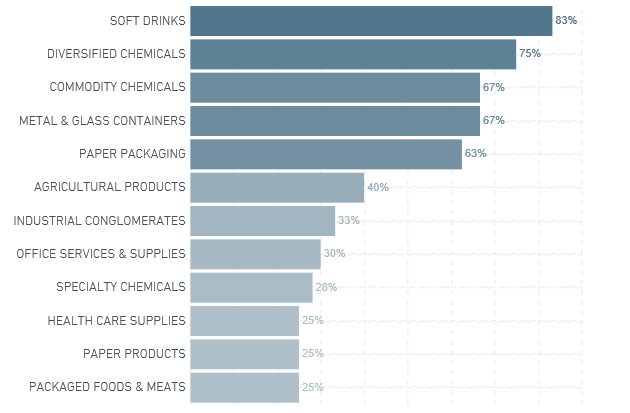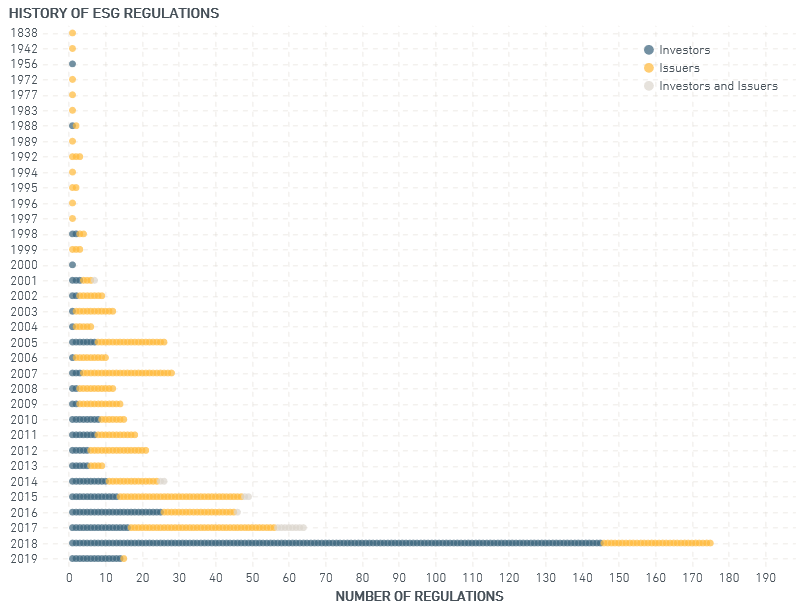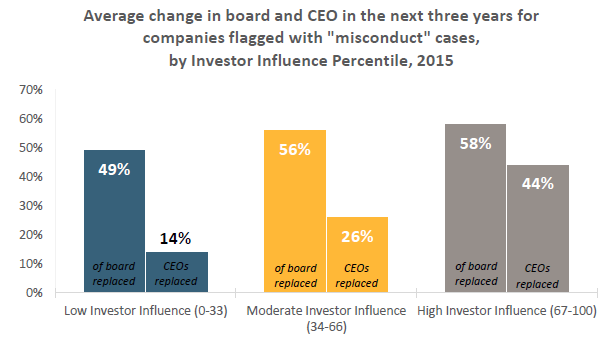These are the ESG trends to look out for in 2019

 Linda-Eling Lee, Global Head of Research for MSCI’s ESG Research group gives the bottom line on trends to look out for in the ESG investing industry in 2019.
Linda-Eling Lee, Global Head of Research for MSCI’s ESG Research group gives the bottom line on trends to look out for in the ESG investing industry in 2019.
The long haul many are bracing for1 has already arrived for ESG investors. Each of our five ESG trends to watch in 2019 contain potentially overlooked costs – and opportunities.
The other trade war: plastic waste
China sent a shockwave through the global waste trade when it stopped accepting 24 kinds of solid waste beginning Jan. 1, 2018 – including the prevalent forms of plastic waste exported2.
In the wake of China’s decision, exporting countries have scrambled to find new markets for their waste and some are getting serious about waste reduction regulations.

More companies will potentially be exposed to plastic and plastic-related regulation beyond the obvious industries.
In 2019, we think companies and investors will be forced to contend with the new reality: waste reduction not as a marketing priority, but as a business challenge.
Companies have taken notice. The number of earnings calls in 2018 that mentioned “plastic waste” increased by 340% compared to 2017.3
And it isn’t just the obvious sectors that could be affected: we analyzed regulatory filings of the 2,450 constituents of the MSCI USA IMI (as of Dec. 12, 2018)4 to find as many as 12 relevant industries, including agricultural products and office services & supplies.
"The long haul many are bracing for has already arrived for ESG investors."
While the eyes of the world focus on one trade war, the global war on waste is just beginning to unfold.
Regulating the business of ESG investing; regulations have increased since 2000
Most ESG-related regulations have targeted issuers. In fact, through 2018, issuer-focused regulations worldwide outnumber those focused on investors by almost 2.5 to 1.5
In 2019, the script could flip. Investors, both asset owners and asset managers, could see escalating demands in this arena as regulators ramp up scrutiny on the business of ESG investing. We estimate as much as USD 32.6 trillion in assets under management could be subject to pending regulations or regulations in discussion, as of 2018.6

Are institutional investors prepared? How might they react?
A number of measures seek to clarify the roles and duties of investors – mostly large asset owners – and other financial institutions. Investors may find these useful, as they ostensibly reduce the amount of second guessing about ESG’s treatment in their investment processes.
"Whether contending with the trade war on plastic waste, new regulations or leadership in the age of transparency, the trends for ESG investors have one thing in common: acting today could make the difference tomorrow."
But reactions to efforts aimed at classifying ESG investment products could be more equivocal and contentious, particularly for asset managers.
The not-so-distant future for climate risk ; risks and opportunities in Florida, US
The latest Intergovernmental Panel on Climate Change’s report on the impacts of global warming found that global emissions need to peak before 2030.7
It is a finding that puts investors on a timeline in which investment allocations made in 2019 will need to account for an accelerated carbon transition – or accelerated climate risk – at times before they finish paying out. Private assets like real estate may be especially affected.
Using aggregated MSCI Real Estate data on 456 commercial real estate assets in 200 Florida ZIP codes representing USD 22 billion in market value8, we found that 51% of the assets are in the vanguard of rising seas. One in five (20%) of these assets were constructed in flood-prone ZIP codes after the year 2000, meaning the properties could be affected by sea-level rise before the end of their usable life.9
 Florida will have different risks and opportunities as sea level begins to inundate coastlines over the next decades.
Florida will have different risks and opportunities as sea level begins to inundate coastlines over the next decades.
However, it may not be all doom and gloom. Some investors have become savvy to the implications of climate change, accruing land with water rights10 or taking advantage of farmland experiencing a longer growing season.11
The big signal revolution
Peter Lynch famously said, “know what you own...” in his book One Up on Wall Street. Often overshadowed is the second half of what he said: “… and why you own it.”12
The “big data” revolution has allowed investors to become less reliant on voluntary corporate disclosure, as the universe of ESG information from alternative sources continues to expand at a pace that far outpaces improvements in voluntary disclosure.
But data alone may not address the second half of Mr. Lynch’s maxim: “…and why you own it.” And it is this question that can best help investors make sense of all this data and extract the most relevant signals.
As we look out onto the next decade for MSCI ESG Ratings, having more data will be the easy part. The hard – and important– part will be knowing how to identify and apply the most relevant metrics to provide increasingly relevant ratings and research.
Leadership in the age of transparency
It’s no secret that the disintegration of walls between corporate leaders and their employees, markets and governments hasn’t just exposed leadership to reputational damage; it has exposed investors to new vulnerabilities.
But in 2019, we anticipate investors will stop asking after a scandal, “what did the board know, and when did they know it?” and start asking “what are my rights?” before a scandal hits.
This is important as some companies seem to be immune to change even after a scandal. Using misconduct or other leadership-controversy data from 2015 for the 2,675 companies in the MSCI ACWI Index, we found that, on average, companies in the lower third of “investor influence” refreshed their boards and CEOs over the following three years (49% of boards replaced and 14% of CEOs replaced) far less often than more easily influenced companies (58% of boards and 44% of CEOs).

Whether contending with the trade war on plastic waste, new regulations or leadership in the age of transparency, the trends for ESG investors have one thing in common: acting today could make the difference tomorrow.